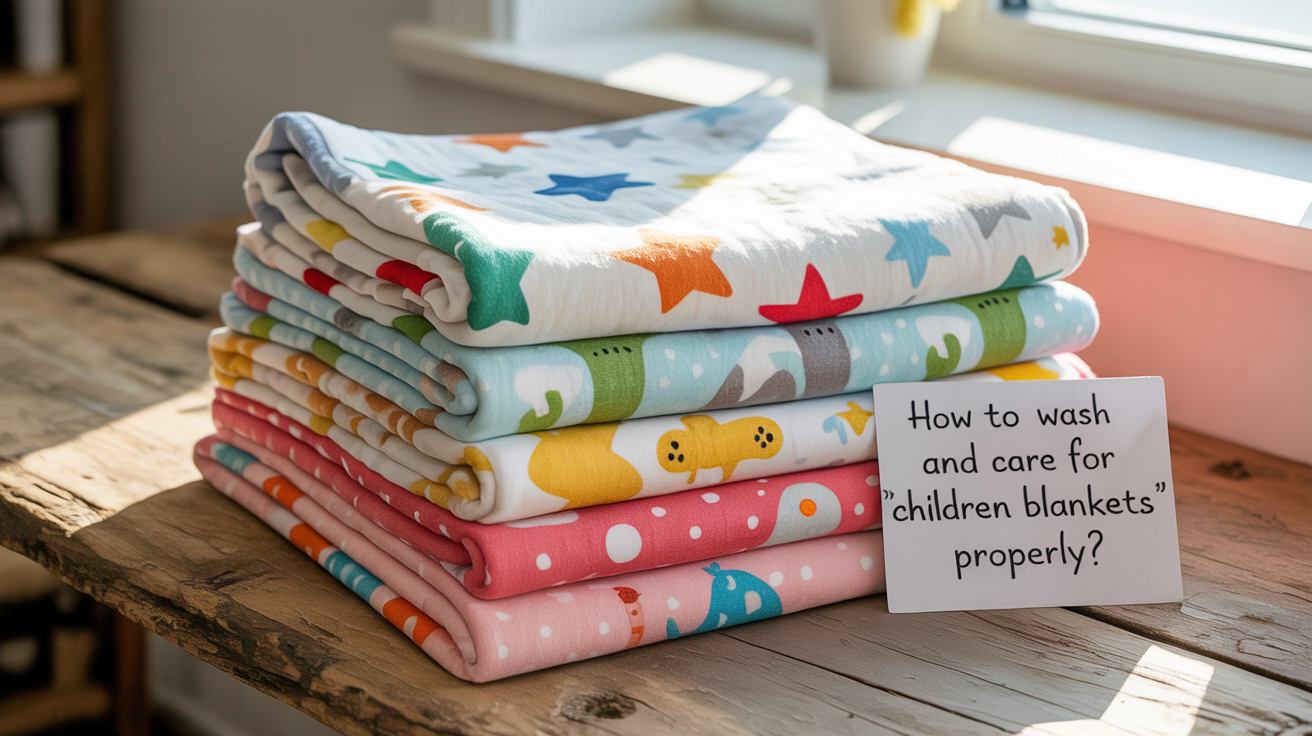How To Wash And Care For Children Blankets Properly?

Children’s blankets serve purposes beyond warmth. Children find these places safe. Many young children curl up with these blankets for play or sleep time. One may build a fort with them. Children commonly use blankets to accumulate sweat, saliva, food spills and strange stains. Carefully cleaning and tending to these blankets is vital. They keep your child’s health intact by being fresh and clean, therefore preventing allergies and germs. Frequent moderate cleanings of blankets help them to remain flexible and strong. Good upkeep makes blankets safe and pleasant for regular use. Your child might enjoy their favourite blanket without any health risks or discomfort. For children, clean blankets remind them of great, wholesome memories.
Types Of Children’s Blankets
Different blankets meet different demands and warming degrees for different kids. Every day use needs fluffy, light, warm fleece blankets. For daily use, fluffy and light Childrens Fleece Blankets offer cosy comfort and are easy to care for. Weighted blankets enable kids, especially those with sensory problems, to relax by applying modest pressure. Quilted blankets abound in warmth and endurance. Mostly used during the night or for naps. Little children and newborns would find ideal light and airy muslin blankets. The type of blanket your child needs depends on their age, comfort level, and season.
Pre-Wash Preparation
Get kids’ blankets ready for washing so they stay nice. Look first at the care label on the blanket for washing directions. Certain blankets need soft cycles or cold water. Shake the blanket to gather pet hair, crumbs, and loose dirt. To get stains out, use soap or a mild stain remover. Apply the stain gently, then wash. Never use strong chemicals or bleach that can damage the cloth or cause itching for your child.
Drying Techniques
Correct drying of children’s blankets maintains their durability and suppleness. Generally speaking, blankets dry spontaneously. Either lay the blanket straight in front or hang it to dry. This stops damage and shrinking of textiles. Machines should be set to run on low heat or moderate to guard blanket fibres. Steer clear of strong heat; it shrinks, fades, and roughs. Air-dry wool and other sensitive textiles to retain their fluffy and cuddly texture. To stop mould and mildew, dry the blanket before using or storing. The blanket will be safe and cosy for your youngster if correctly dried.
Stain Removal Tips
When stains are eliminated right away, kids’ blankets remain fresh and clean. Press a fresh towel lightly over most spots to absorb extra liquid. Steer clear of rubbing, since this might aggravate the discolouration. Using a moderate spot remover or water and a mild detergent, prepare the area. After a few minutes, wash it. For food and grass stains, gently brush. Strong chemicals like bleach can destroy clothing and irritate your child. Start with a small, invisible area with spot removers.
Wash Children’s Blankets How Often?
Washing children’s blankets regularly keeps them clean and healthy. Use the blanket every day and wash it once to two a week. A blanket meant mostly for naps or nights might only need to be washed twice or three week. Still, outdoor play, stains, and spills can destroy the blanket. Right away, wash it to get rid of smells and bacteria. Wash blankets more often to avoid germs if your child is sick or in cold and flu season. Regular washing of blankets keeps them safe, soft, and clean, therefore enhancing your child’s health and happiness.
Special Care For Sensitive Skin
Should your child have sensitive skin, carefully wash their blanket. To prevent skin irritability, use mild, scent-free soaps. Steer clear of strong detergents and fabric softeners that aggravate allergies and skin conditions. You can wash blankets gently in either warm or cold water to protect the cloth and your child’s skin. If you clean blankets, you can get rid of soap residue that could hurt sensitive skin. When you wash new blankets, you get rid of any poisons that were used to make them.
Conclusion
With a few basic steps, you may readily look after your child’s blanket. Whichever blanket your child owns, fleece, cotton, or another, washing and caring for it will keep it safe, fresh, and clean. Being attentive can help your youngster remain healthy, and the blanket looks good and new for a longer period.









